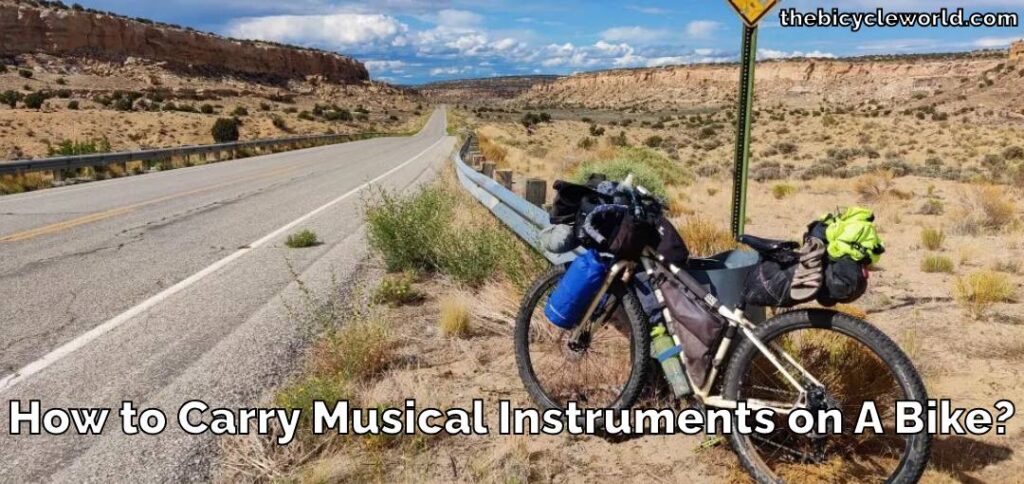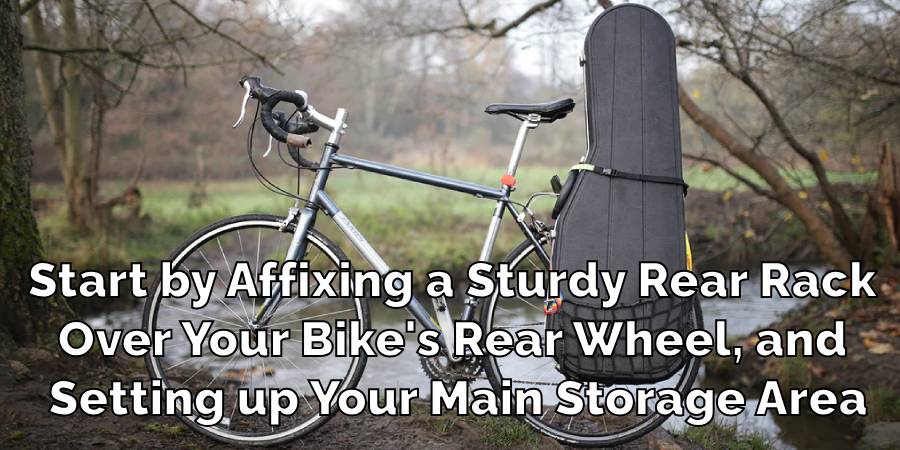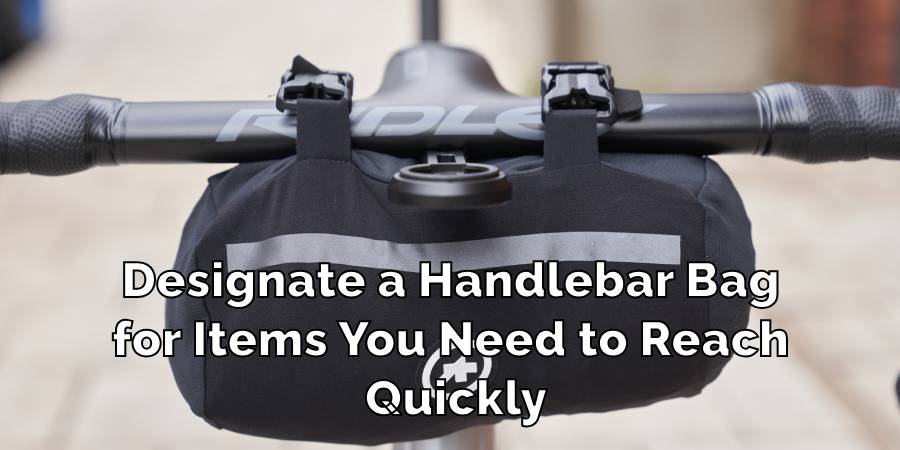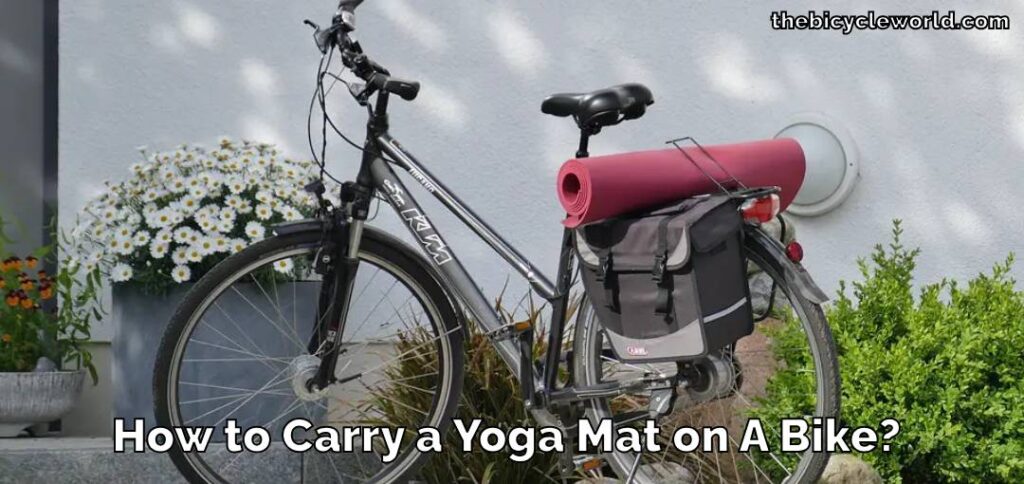How to Carry Musical Instruments on A Bike?
On a venture where the harmony of biking intertwines with the rhythm of music, I wasn’t just looking to dodge the congested streets or save a dime on fuel. I aimed to forge a lifestyle in sync with Earth’s rhythm while boosting my well-being.

Envision cruising through urban landscapes, the vibrations of my guitar strings syncing with every pedal push. This journey “How to Carry Musical Instruments on A Bike?” transcends mere transportation.
It’s a concert on wheels that binds environmental mindfulness with physical health, paving the way for a melody-infused, green lifestyle.
Essentials for Toting Tunes on Two Wheels
Transporting your musical allies on a bicycle might appear daunting initially, but with the right ensemble of gear, it transforms into an invigorating quest. Here’s a streamlined list of must-haves for a seamless fusion of motion and music.
This kit ensures your prized musical instruments are protected and revered as you traverse the city’s melody, combining your passion for sound with sustainable transport.
- Robust rear rack: Your mobile stage’s foundation. A durable rack secured to your bike’s tail provides a steadfast base to anchor your musical gear.
- Top-tier waterproof panniers: Picture these as your bicycle’s luggage, safeguarding your sound equipment and stringed instruments against the elements. Choose waterproof models to ensure your equipment remains unaffected by weather, easily attaching to your rear rack.
- Bungee cords or straps: The linchpins of stability, these essentials keep your gear snugly attached to your bike, averting any unwanted solos during your ride.
- Durable instrument case: Essential for your instruments’ longevity. A rigid case offers optimal protection, while a padded gig bag may suffice for shorter trips. Confirm it’s equipped with fixtures for bike attachment.
- Handlebar pouches: Perfect for storing easily accessible items like picks, tuners, or sheet music, allowing quick access without halting your melodious journey.
- Safety lighting and reflective gear: Visibility is paramount. Deck out your setup with reflective accessories and lights to ensure you and your musical companions are seen, ensuring safe passage during dusk or dawn rides.
Armed with these tools, your musical escapades on two wheels become not just possible, but a gateway to new explorations, blending physical activity with the pleasure of being accompanied by your instruments.
How to Carry Musical Instruments on A Bike? (Guide to Bike-Bound Instrument Transportation)
The thought of carrying musical instruments on a bicycle may seem complex at first, but it evolves into a gratifying aspect of your musical voyage once decoded. Let’s simplify the process into actionable steps, ensuring your instruments are always part of your mobile ensemble.
Bike Preparation

Start by affixing a sturdy rear rack over your bike’s rear wheel, and setting up your main storage area. Waterproof panniers are vital for protecting electronic or sensitive gear from moisture, easily latching onto your rack.
Instrument Storage

For larger instruments, a well-cushioned hard case is advisable. Ensure the case features straps or loops for secure bike attachment using bungee cords or straps, aiming for balance to maintain your bike’s stability.
Load Distribution

If your musical odyssey includes various items, evenly distribute the weight across your bike to keep it stable. This may involve using two panniers, one on each side, to ensure unimpeded mobility.
Quick-access Items

Designate a handlebar bag for items you need to reach quickly, such as your smartphone, a tuner, or sheet music, keeping them handy for immediate use.
Make Yourself Seen

Attach reflective materials to your instrument case and bags, and use bike lights during low-light conditions to make sure you and your valuable cargo are visible to others.
Trial Run
Perform a short test ride to verify everything is securely fastened, paying attention to any loose items or shifting. It’s preferable to adjust in a controlled setting rather than during your journey.
Route Planning
Contemplate your route’s layout, opting for smoother paths or bike lanes when feasible, to reduce the jostling of your instruments.
By incorporating these steps, transporting your musical instruments by bike transitions from a logistical challenge to a rewarding element of your musical story. It’s a harmonious blend of mobility and melody, intertwining your passion for music with an active, eco-conscious lifestyle.
As you pedal forth, let the beat of your journey sync with the strum of your heartstrings, inviting a new chapter of musical adventures.
Safety Precautions
When planning to transport your musical instruments by bike, it’s crucial to consider their unique characteristics and needs. Instruments come in all shapes and sizes, from the compact harmonica to the bulky keyboard.
Their fragility varies too; string instruments like violins are delicate, while brass instruments like trumpets are more robust. Weather sensitivity is another key factor. Wood instruments can warp in humidity, while extreme temperatures can affect tuning and integrity.
Understanding these aspects helps you prepare better. For large or awkwardly shaped instruments, think about custom solutions like specially designed racks or carriers.
For delicate items, ensure your cases have ample padding and are securely fastened to avoid jostles and bumps. Always weigh the conditions you’ll be biking in against the vulnerabilities of your instruments to plan the safest route.
Tuning Up for a Secure Ride
Ensuring both your and your instrument’s safety during the ride is paramount. Start with your bike: check that it’s in good working order, with brakes and gears functioning properly. Outfitting your bike with reflective gear and lights is non-negotiable, especially if you’re traveling in dim light. Visibility ensures safety.
Balancing your load is key to a stable ride. Heavy or unevenly distributed cargo can make handling difficult and increase the risk of accidents. Place heavier items at the bottom and as close to the center of the bike as possible to maintain balance.
For personal safety, wearing a helmet, knee, and elbow pads can provide extra protection in case of falls or bumps.
Weatherproofing Your Musical Journey
The elements can be unpredictable, and protecting your instruments from rain, humidity, and temperature extremes is vital. A straightforward strategy is using waterproof cases or bags, but they can be pricey.
For a DIY approach, consider waterproof covers made from high-quality, durable materials. Even simple solutions like large plastic bags can provide an extra layer of defense in a pinch.
For humidity control, small silica gel packets placed inside instrument cases can absorb moisture and protect the instrument. In extreme temperatures, try to limit exposure. If moving between drastically different climates, allow your instrument time to acclimate inside its case to prevent damage.
Fine-Tuning on the Go: Instrument Care and Quick Fixes
Keeping your instruments in prime condition while you’re hopping from one gig to another on your bike is crucial. Regular maintenance not only ensures they sound their best but also prevents damage. Simple, routine checks can save you from headaches later, especially when you’re far from a repair shop.
For starters, always give your instrument a once-over before and after your ride. Check for any loose parts, unusual wear, or signs of damage. Keeping a cleaning cloth handy helps wipe away any dust, moisture, or grime that could accumulate during the journey.
For string instruments, a quick tuning before you set off and after you arrive ensures they’re ready to play. An essential toolkit for emergency repairs can be a lifesaver. This kit might include a small screwdriver, pliers, spare strings, a tuner, and duct tape for quick fixes.
Knowing how to use these tools for common issues, like tightening a loose peg or replacing a snapped string, means you won’t miss a beat before your performance.
Remember, the key to smooth performances starts with how you care for your instruments between rides. With a bit of prep and a toolkit ready, you can face minor emergencies head-on, ensuring your music never skips a beat, no matter where your biking adventures take you.
Combining cycling with music isn’t just about transportation; it’s a meaningful choice that resonates with your commitment to the environment, your health, and your creativity. This journey is more than just a route; it’s a lifestyle that enhances your music and your impact on the environment.
So, as you pedal forward, cherish the blend of melodies and movement, knowing you’re creating memories and making a difference. Secure your instrument, and check your bike, for the adventure. Here’s to the harmony of music and cycling, inspiring smoother rides and richer tunes for us all.
Conclusion
Mixing biking with music is more than getting from A to B with your instrument. It’s a choice that echoes our love for the environment, our health, and creativity. This lifestyle blends the joy of music with the rhythm of cycling, showing that small shifts in how we move can make a big difference.
It’s about making each ride a moment to cherish, inspire, and contribute to a healthier environment. So, let’s ride and play with purpose, making every pedal and note count towards a better harmony between our passions and our planet.
You may also read – How to Carry a Yoga Mat on A Bike?
How to Carry Bike on A Scooter?
The swift agility of a scooter with the pedal-powered pleasure of a bike isn’t just…
Where To Put Keys While Cycling?
Hey there, cyclists! Keys might seem like a simple thing, but listen up – keeping…
How to Lock Multiple Bikes Together?
Heading out with friends or family for a bike ride? Great idea! But let’s not…
How to Carry Boxes on A Bike?
Choosing your bike over a car is kind to the earth because you’re not causing…
How to Carry Musical Instruments on A Bike?
On a venture where the harmony of biking intertwines with the rhythm of music, I…
How to Carry a Yoga Mat on A Bike?
Mixing cycling with yoga offers a unique blend of benefits, including a heart-healthy warm-up from…











